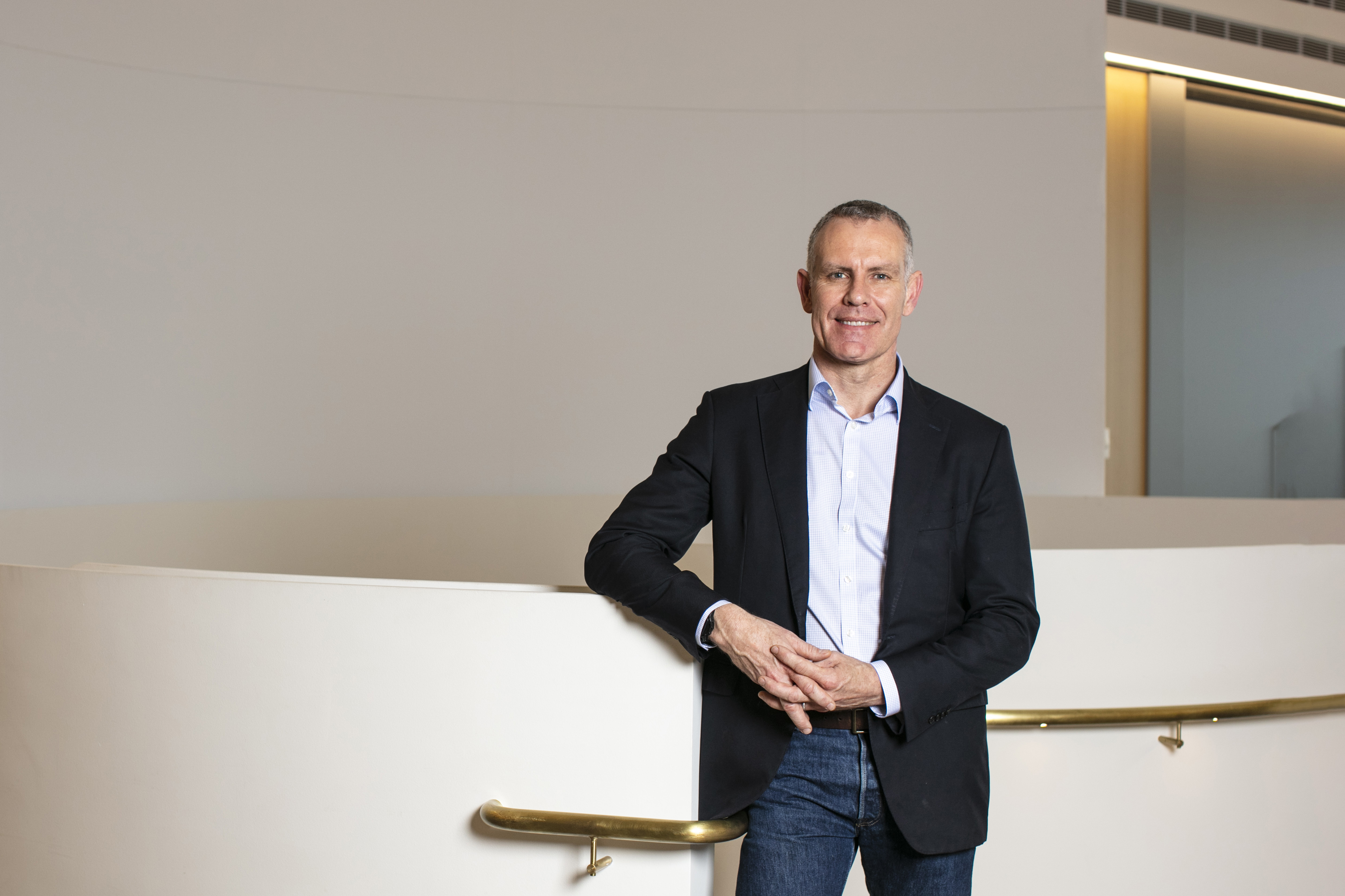EY refers to the global organization, and may refer to one or more, of the member firms of Ernst & Young Global Limited, each of which is a separate legal entity. Ernst & Young Global Limited, a UK company limited by guarantee, does not provide services to clients.

COOs that create a culture that puts people first will drive a productivity uplift and help banks manage change and uncertainty better.
In brief
- COOs are facing near constant disruption as they look to reduce costs, react to the cost-of-living crisis and prepare for longer-term volatility.
- A focus on workforce is more critical than ever to create a high performing operations culture agile enough to handle volatility and embrace tech innovation.
- COOs need to show high emotional intelligence, to support and inspire their people, and manage their teams and their own mental and physical health.
In mid-2022 it was clear that COOs were under pressure to make operational activity faster, cheaper, safer and more sustainable. The last few months have further reinforced the intensification of roles across the bank C-suite. At the same time, COOs are facing a much broader set of challenges, requiring different skills.
The cost-of-living crisis has significantly increased the demand for costs to be streamlined to help mitigate the impact of inflation flowing through the cost base. At the same time, banks face increased servicing pressure in their consumer and commercial businesses. This ranges from handling refinancing and collection and recoveries, as well as responding to shifts in customer behaviours, such as an increased demand for human interaction.
COOs, working ever more closely with fellow C-suite colleagues, are also helping their financial institutions prepare for a greater risk of recessionary challenges, as well as getting ready for a very different geopolitical future, a transformed competitive marketplace in the longer term and climate change.
This significant and complex agenda takes place in an increasingly economically uncertain world. The IMF’s World Uncertainty Index shows that uncertainty has been consistently increasing since 2016. This level of turmoil makes it a demanding challenge to provide the workforce, significant parts of which are directly involved in the above transformation agendas, with meaningful stability, answers and clarity.
Chapter 1
An uncertain future requires human-centred leadership
Learn how leaders can create a high-performance environment.
Whilst the role of COO has varied significantly by sector, organization and need, they have historically been most strongly orientated towards leadership of the more quantitative aspects of operational performance. This includes the human productivity of their organizations.
As people, we are all now more aware of the wider impact of decisions that we make, which is driving the redefinition of enterprise success (via EY.com UK) to encompass broader employee, customer and societal impacts, driving evolution of the skills required for success in all C-suite roles; the COO is no exception.
With the relentless push for results, leaders speak about creating a high-performance environment where success is inevitable. But what does this really mean? Core to that is adopting a more human-centred leadership approach. This means taking the time to understand and support their people. This is critical in the current environment, where the direction of travel may be difficult to define, as a result of broader uncertainty.
Leaders create a high-performance environment by ensuring everyone has absolute clarity on what they are trying to achieve in their role and how it contributes to organizational success, but still feel comfortable bringing their whole selves to work to deliver this.
This means having a really clear ‘what it takes to win’ model with clear performance metrics, where each member of the team is aligned behind an overall goal. It isn’t enough to have a great vision statement, leaders need to be able to engage their teams so they can both understand what is required, but also care about being part of the result. This is centered and balanced around three key elements:
- Vision – high performing teams are centered around a compelling vision. People understand what’s expected of them and how it contributes to overall success.
- Support – teams are supported and motivated through feedback, advice and recognition.
- Challenge – teams are stretched and challenged to push the boundaries of their own performance.
The critical element is for leaders to understand which lever to pull and at what time; knowing whether their teams need more support, challenges or a more compelling vision to perform better is essential.
If COOs don’t engage more deeply in the people agenda, they face a significant talent engagement problem, running the risk of people burning out or being overwhelmed. According to research, 71% of employees (pdf) think their leaders “always” or “often” make critical decisions solely based on financial considerations such as profit, costs and growth. COOs need to step into the shoes of their people and truly understand how they are feeling and what they need to perform at a high level. It is about focusing on human, and not just business, impacts – people perform at their best when they trust their leaders.
Winning the people challenge when transformation and uncertainty have become business as usual
The focus on a human-centered leadership style is needed more than ever, and significant change requires leaders to really understand people’s mindsets. Failure to communicate the vision behind change, or providing insufficient support, can lead to negative employee and corporate emotion. A lack of challenge may also see a sub-optimal outcome. Focusing on the human perspective of transformation is vital.
For example, we know many banks are looking to fully centralizing certain core services like HR or risk, which currently sit within business units. The business rationale is clear – creating centres of excellence and cost savings through economies of scale. A high-performing leader needs to understand and mitigate the disruption and risks it brings to the individuals impacted. This could be concerns about job security or a loss of identity as they are moved away from another division.
Without addressing these worries, leaders risk individuals becoming less productive or leaving the organization, undermining success. It will also mean a negative perception of transformation and an unwillingness to ride the next wave. COOs, like all leaders, must ensure the human element is addressed, in the same way cost savings, efficiencies and better customer outcomes are targeted.
Chapter 2
Humans at the center – the key to better transformation
Learn about the key factors that influence transformation performance.
Given that many large bank plans rely on tens of thousands of employees to drive change, any failings around transformation can be a major strategic problem. We know that organizations that put humans at the center of transformations are 2.6 times more likely to succeed than those that don’t.
EY and the University of Oxford’s Saïd Business School looked in detail at the key factors that influence transformation performance.
1) Lead: adapting and nurturing the necessary leadership skills
- COO leaders will need to demonstrate high emotional intelligence to be effective leaders. They and their leadership teams will need to be empathic toward the workforce experience of transformation, while acknowledging and navigating their own emotional journey. This may not be within the comfort zone of many COOs who may have traditionally relied more on their rational brain to guide them.
- They will need to have the courage to acknowledge they may not have all the answers. For example, 47% of respondents in high-performing transformations said that leaders accepted ideas from more junior personnel versus 29% of respondents in low-performing transformations.
- COOs will need to ensure they have the right leadership team. That may not be as simple as choosing the best operations or technology talent, as projects may need a broader diversity of skill set. It’s about building a team who are going to lean in and drive transformation forward. That may be a difficult challenge, as operational team members may rapidly need to both develop new skills and shift mindset.
2) Inspire: creating a vision that everyone can believe in
COOs understand they increasingly need to apply “future-first” thinking. Defining a firm vision, like a zero-operations mindset, signals a change in approach and perspective with a clear objective. It will drive much higher levels of consciousness on decisions and may necessitate COOs engaging more deeply and more regularly with all levels of their teams.
Yet defining that north star presents real challenges. Priorities and demands are constantly changing – the pandemic and the cost-of-living crisis added to, not replaced, key aims around cost and technological change. The path forward is unlikely to be straightforward and COOs will need to tap into the psychology of uncertainty, bringing fresh and diverse perspectives to help shape the vision and to ensure teams are agile and iterative as targets shift.
3) Care: building a culture that embraces and encourages everyone’s opinion
Harnessing diversity of thought will be critical for COOs. They need to create a culture where people are confident in speaking freely and proactively soliciting opinion, and creating space for dissenting voices and reflective thinkers. This psychological safety is at the core of a human-centered employee experience. Without it, employees will struggle to bring their whole selves to work. If employees feel safe psychologically within their team, they will feel safe to try new ways of working and innovate around processes without the fear of failure or judgment.
Understanding the emotional state of the workforce also helps identify early warning signals that a transformation is taking a negative turn, and an opportunity to course-correct, while providing transparency, builds trust.
At the same time, COOs will need to draw the line somewhere, balancing consultation with driving through the change needed. That may mean making hard choices about when to stop the discussion phase and even asking people to step away from the process if they are not supportive.
Leaders will need to be more aware of their decision-making style, utilizing a “ruthless-caring” mindset, where tough decisions are still undertaken but with empathy, consideration and support given to those impacted. They will ultimately need to provide a balance of vision, support and challenge to sustain the high-performance environment, helping their teams remain focused on priorities amidst the distraction of change.
Chapter 3
The future is more human
The list of areas COOs are working across whilst empowering a workforce.
COOs, with their C-suite colleagues, are enabling banks to become better, faster, cheaper, safer and more sustainable. With most COOs accountable for technology, as well as a significant proportion of their institution’s total workforce, it is clear how critical they are to the future success of their organization.
In the post pandemic world, COOs have an opportunity to redefine their own role, impact and culture. Key to that is being human centric, ensuring they create a high-performance environment and embedded future-first thinking. Being able to get buy-in for their vision, and providing the right support and challenge, will unlock higher levels of productivity.
The ability to create a high-performance environment will be vital beyond the execution of transformation. The list of areas COOs are working across include:
- Prioritizing - Continuous prioritization will be a core part of a COO’s strategy. They will need to decide what projects to abandon, evolve or accelerate, while dealing with a constant wave of new demands, such as ensuring they have a workforce with the right skills.
- Collaborating across the C-suite –The COO has a key role collaborating across the bank, for example, how to best resolve a cost reduction transformation that negatively impacts a customer outcomes-focused transformation. In the face of upcoming volatility and uncertainty, the COO will also have a key role in working with all bank leaders to manage the path ahead.
- Reframing uncertainty – The prognosis is for continued uncertainty ahead, but that challenge also brings opportunities. Being able to inspire and lead people to be resilient and react quickly is essential, especially without always having the psychological safety of stable long-term goals.
- Setting the sustainability example - COOs must ensure they recognize their actions will effectively set the tone for the entire organization’s sustainability drive and embed a zero-carbon mindset within an overall zero-operations strategy.
- Empowering their people - Providing employees with recommendations and decision-making context to become more productive and make higher-quality decisions more consistently and potentially faster will support the scale and speed of transformation.
Kate McGarel-Groves, Senior Manager, People Advisory Services, Ernst & Young LLP co-authored this article.
Richard Parker, Partner, EY Lane4, EY Professional Services Limited co-authored this article.
Summary
The environment facing banks remains challenging with high levels of volatility. This puts significant pressure on the workforce within operations, as they grapple with managing the cost-of-living crisis while having to be agile enough to respond to an ever-changing agenda. COOs are equally under pressure to drive more value from their workforce, while unable to give them clarity or a long-term vision. A more deeply people-centric leadership approach is necessary, one that creates a culture that inspires and supports individuals and harnesses diversity of thought.
Related articles
How do you harness the power of people to double transformation success?
Read about how EY and the University of Oxford explored the emotional cost of failed transformations and what it takes to get them right.
How can banks generate greater value through improved customer service
Effective customer service transformation requires both cost reduction and a value-generation strategy built on technology and people. Learn more.
How bank COOs can unlock value at scale and speed with zero operations
Chief Operating Officers (COOs) can accelerate transformation through embedding a "zero operations" mindset in their organizations. Learn more.
How EY can Help
-
EY and EY-Parthenon can help you devise a strategy to realize your ambition: powered by technology, shaped by your portfolio and executed by transformation.
Read more





